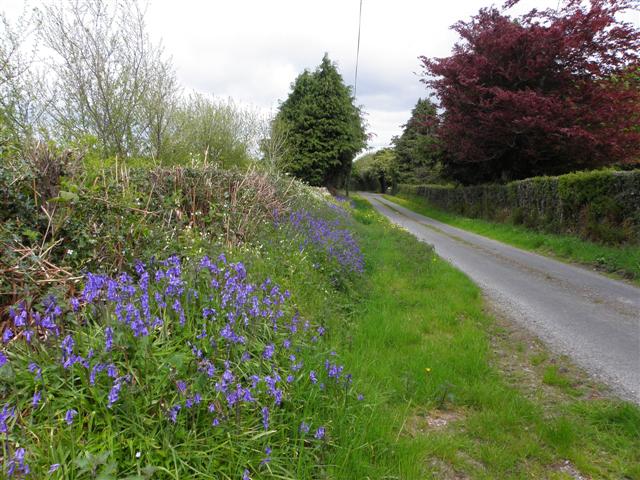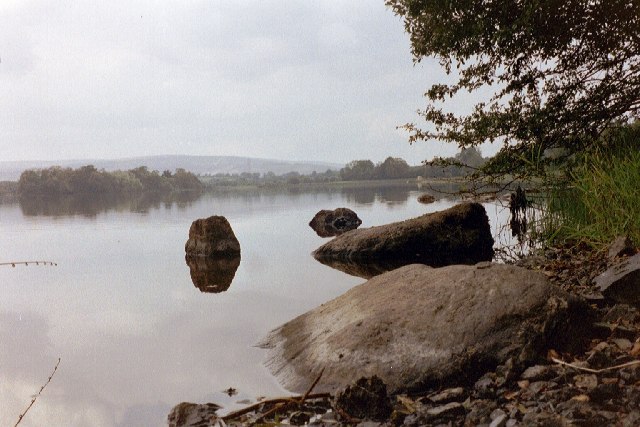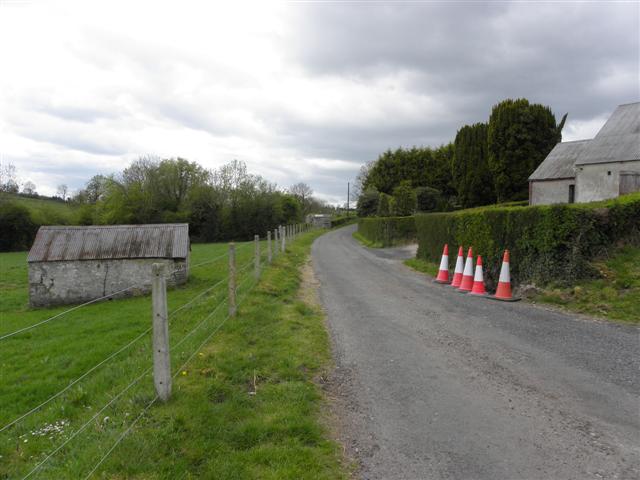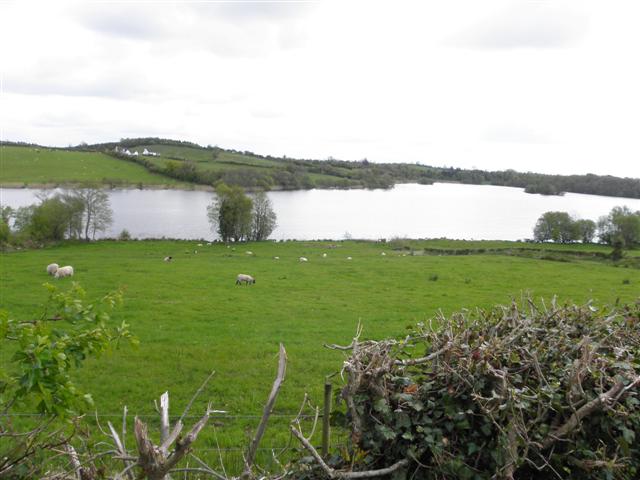|
Ardue
Ardue is a townland in the civil parish of Drumlane, Barony of Loughtee Lower, County Cavan, Ireland. Etymology The townland name is an anglicisation of a Gaelic placename, ''Ard Aodha'', meaning 'The Height of Hugh'. The local pronunciation is ' ''Are-Dew'' '. The earliest surviving mention of the townland is on the 1609 Ulster Plantation map of the Barony of Loughtee, where it is spelled ''Ardea''. A 1610 grant spells it as ''Ardea''. A 1611 grant spells it as ''Ardea''. The 1654 Commonwealth Survey spells it as ''Ardy''. The 1660 Books of Survey and Distribution spell it as ''Ardy''. The 1661 Inquisitions spell it as ''Ardea'' and ''Ardeagh''. The 1790 Cavan Carvaghs list spells the name as ''Ardue''. A sub-division of the townland was named Culnagolly (Gaelic, possibly ''Cúil na Gualaigh'', meaning 'The Corner of the Charcoal', or ''Coill na Gualaigh'', meaning 'The Wood of the Charcoal'). On the 1609 Baronial map it formed a separate townland from Ardue. An Inquisition da ... [...More Info...] [...Related Items...] OR: [Wikipedia] [Google] [Baidu] |
Killywilly - Geograph
Killywilly is a townland in the civil parish of Drumlane, Barony of Loughtee Lower, County Cavan, Ireland. Etymology The townland name is an anglicisation of a Gaelic placename, either ''Coill Mhuilinn'', meaning 'The Wood of the Mill', or ''Coillidh Bhuaile'', meaning 'The Wood of the Cattle-Fold', or ''Coill an Bhealaigh'', meaning ‘The Wood of the Pass’. The first name is more likely as there was a mill there at least as early as the 17th century and most of the early placename spellings are consistent with this. The earliest surviving mention of the townland is on the 1609 Ulster Plantation map of the Barony of Loughtee, where it is spelled ''Killivelly''. A 1610 grant spells it as ''Keilenolin''. The 1654 Commonwealth Survey spells it as ''Killevullin''. The 1660 Books of Survey and Distribution spell it as ''Killycullen''. The 1661 Inquisitions spell it as ''Kelewolin'' and ''Killewooley''. The 1790 Cavan Carvaghs list spells the name as ''Killevally''. Geography K ... [...More Info...] [...Related Items...] OR: [Wikipedia] [Google] [Baidu] |
Tomkinroad Lough - Geograph
Tomkinroad is a townland in the civil parish of Drumlane, Barony of Loughtee Lower, County Cavan, Ireland. Etymology The townland name is an anglicisation of a Gaelic placename, the meaning of which is unclear. It could be either ''Tom Chinn Róid'', meaning 'The Bush at the Head of the Road', or ''Tuaim Chinn Róid'', meaning 'The Tomb at the Head of the Road', or ''Tuaim Chinn Ruadh'', meaning 'The Tomb of the Three Redheads', an allusion to the men who killed the Irish hero, Conall Cernach at nearby Ballyconnell. The earliest surviving mention of the townland is on the 1609 Ulster Plantation map of the Barony of Loughtee, where it is spelled ''Tomchonro''. A 1610 grant spells it as ''Tomchouro''. A 1611 grant spells it as ''Tomchouroe''. The 1654 Commonwealth Survey spells it as ''Tomcherrode''. The 1660 Books of Survey and Distribution spell it as ''Tomkinerode''. The 1661 Inquisitions spell it as ''Temconrode''. The 1790 Cavan Carvaghs list spells the name as ''Tomkinrode'' ... [...More Info...] [...Related Items...] OR: [Wikipedia] [Google] [Baidu] |
Tomassan
Tomassan is a townland in the civil parish of Drumlane, Barony of Loughtee Lower, County Cavan, Ireland. Etymology The townland name is an anglicisation of a Gaelic placename, ''Tuaim Easain'', meaning either 'The Tomb of Easan' or "The Tomb of the Little Waterfall". The earliest surviving mention of the townland is on the 1609 Ulster Plantation map of the Barony of Loughtee, where it is spelled ''Tomasan''. A 1610 grant spells it as ''Tomassan''. The 1641 Rebellion Depositions spell it as ''Tomasin''. The 1654 Commonwealth Survey spells it as ''Tuomashan''. The 1660 Books of Survey and Distribution spell it as ''Tommassen''. The 1661 Inquisitions spell it as ''Tumason''. The 1790 Cavan Carvaghs list spells the name as ''Tomessan''. Geography Tomassan is bounded on the north by Camalier townland, on the east by Drumrush townland, on the south by Ardue and Tomkinroad townlands and on the west by Cuillaghan townland. Its chief geographical features are the Rag River, Cuilla ... [...More Info...] [...Related Items...] OR: [Wikipedia] [Google] [Baidu] |
Tomkinroad
Tomkinroad is a townland in the civil parish of Drumlane, Barony of Loughtee Lower, County Cavan, Ireland. Etymology The townland name is an anglicisation of a Gaelic placename, the meaning of which is unclear. It could be either ''Tom Chinn Róid'', meaning 'The Bush at the Head of the Road', or ''Tuaim Chinn Róid'', meaning 'The Tomb at the Head of the Road', or ''Tuaim Chinn Ruadh'', meaning 'The Tomb of the Three Redheads', an allusion to the men who killed the Irish hero, Conall Cernach at nearby Ballyconnell. The earliest surviving mention of the townland is on the 1609 Ulster Plantation map of the Barony of Loughtee, where it is spelled ''Tomchonro''. A 1610 grant spells it as ''Tomchouro''. A 1611 grant spells it as ''Tomchouroe''. The 1654 Commonwealth Survey spells it as ''Tomcherrode''. The 1660 Books of Survey and Distribution spell it as ''Tomkinerode''. The 1661 Inquisitions spell it as ''Temconrode''. The 1790 Cavan Carvaghs list spells the name as ''Tomkinrode'' ... [...More Info...] [...Related Items...] OR: [Wikipedia] [Google] [Baidu] |
Ture, Drumlane
Ture is a townland in the civil parish of Drumlane, Barony of Loughtee Lower, County Cavan, Ireland. Etymology The townland name is an anglicisation of a Gaelic placename, ''An t-Iúr'', meaning 'The Yew Tree'. The local pronunciation is ' ''Chew-R'' '. The earliest surviving mention of the townland is on the 1609 Ulster Plantation map of the Barony of Loughtee, where it is spelled ''Anture''. A 1610 grant spells it as ''Anture''. A 1611 grant spells it as ''Ardea''. An Inquisition dated 30 September 1628 spells it as ''Antnar''. The 1654 Commonwealth Survey spells it as ''Ture''. The 1660 Books of Survey and Distribution spell it as ''Ture''. The 1661 Inquisitions spell it as ''Antoore alias Antuer'' and ''Anture''. The 1790 Cavan Carvaghs list spells the name as ''Anlure''. Geography Ture is bounded on the north by Ardue townland, on the east by Clowney townland, on the south by Ballyhugh and Clonamullig townlands and on the west by Cranaghan and Greaghrahan townlands. Its ... [...More Info...] [...Related Items...] OR: [Wikipedia] [Google] [Baidu] |
Cranaghan
Cranaghan is a townland in the Parish of Tomregan, Barony of Loughtee Lower, County Cavan, Ireland. Etymology The townland name is an anglicisation of the Gaelic placename ''Crannachan'' which means ‘Woodland’. The earliest surviving mention of the townland is on the 1609 Ulster Plantation map of the Barony of Loughtee, where it is spelled ''Granchinah''. A 1610 grant spells it as ''Granchinagh''. A 1627 grant spells it as ''Granchynagh, or Craynkyney, and Cronaghan''. The 1790 Cavan Carvaghs list spells the name as ''Cranaghan''. Ambrose Leet's 1814 Directory spells the name as ''Cranaghan''. Geography It is bounded on the north by Killywilly townland, on the east by Ardue, Ture, Drumlane and Greaghrahan townlands, on the south by Aghavoher and Carrigan townlands and on the west by Cavanagh (townland) and Mullaghduff townlands. Its chief geographical features are Killywilly Lough, Agavoher Lough, Lough Rud, the Rag River and several small drumlin hills reaching to an alt ... [...More Info...] [...Related Items...] OR: [Wikipedia] [Google] [Baidu] |
Carn, Tullyhunco
Carn (Irish derived place name, Carn meaning 'A cairn of stones or a burial-mound'.) is a townland in the civil parish of Kildallan, barony of Tullyhunco, County Cavan, Ireland. Geography Carn is bounded on the north by Ballyhugh and Greaghrahan townlands, on the west by Aghavoher, Breandrum, Tullyhunco and Killygreagh townlands, on the south by Kildallan townland and on the east by Kilnacross and Listiernan townlands. Its chief geographical features are Carn Lough, small streams and a wood. Carn is traversed by minor public roads and rural lanes. The townland covers 228 acres. History The townland was occupied from prehistoric times as is evident from the megalithic structure therein. From medieval times up to the early 1600s, the land belonged to the McKiernan Clan. Their lands were divided into units called a ballybetagh. A survey conducted in 1608 stated that one of these was named ''Ballencharne'' containing 14 polls or townlands, which was centered on Carn townland. ... [...More Info...] [...Related Items...] OR: [Wikipedia] [Google] [Baidu] |
Cuillaghan
Cuillaghan is a townland in the civil parish of Drumlane, Barony of Loughtee Lower, County Cavan, Ireland. Etymology The townland name is an anglicisation of a Gaelic placename, ''Coilleachán'', meaning 'The Underwood' (i.e. a place full of shrubs). The local pronunciation is 'Kull-Ya-Han'. The earliest surviving mention of the townland is on the 1609 Ulster Plantation Baronial map of the Barony of Loughtee, where it is spelled ''Cullagan''. A 1610 grant spells it as ''Cullagan''. The 1654 Commonwealth Survey spells it as ''Quillaghan''. The 1660 Books of Survey and Distribution spell it as ''Quillehan''. The 1661 Inquisitions spell it as ''Callaghan alias Callagan'' and ''Quillaghan''. Geography Cuillaghan is bounded on the north by Corraquill and Dernagore townlands (both situated in the Northern Ireland part of the United Kingdom), on the east by Camalier and Tomassan townlands, on the south by Ardue townland and on the west by Annagh, County Cavan, Cloncoohy, which is ... [...More Info...] [...Related Items...] OR: [Wikipedia] [Google] [Baidu] |
Edward Bagshawe Of Finglas
Sir Edward Bagshawe (or Bagshaw) (died 6 October 1657) of Finglas, County Dublin, was knighted in 1627, reappointed a comptroller of customs in 1629 and was a member of parliament for the borough of Banagher in Strafford's parliament of 1634−1635. During the Commonwealth (1650s) he was a commissioner of the revenue. Biography Little is known of Edward Bagshawe until 1624, when he appears as customer of the ports of Dublin, Skerries, Malahide, and Wicklow, but his services to the government must have been considerable, as in 1627 he received a knighthood and was given a grant of lands, afterwards known as the manor of Castle Bagshawe, Belturbet in County Cavan. At this time the government of Ireland farmed out the collection of customs duties to a consortium. That is the English consortium paid the government a fixed amount of money for the right to collect the customs duties and to keep the profits. The government benefited because it was guaranteed money while the consorti ... [...More Info...] [...Related Items...] OR: [Wikipedia] [Google] [Baidu] |
John Richardson (bishop Of Ardagh)
John Richardson (1580–1654) was an English bishop of the Church of Ireland. He was nominated Bishop of Ardagh on 8 April 1633 and consecrated in September that year. He was also Archdeacon of Derry from 1622 to 1634; and Archdeacon of Connor from 1639 to 1654. He left Ireland before the Rebellion of 1641 and died in London on 11 August 1654. Life He was born near Chester, entered Trinity College, Dublin, graduated M.A., and became a fellow in 1600. In the same year he was selected with James Ussher and another as lay preacher at Christ Church Cathedral, Dublin. Richardson's part was to preach on Wednesdays, and explain the prophecies of Isaiah. He later took holy orders, and was created D.D. in 1614. Richardson held many preferments. He was appointed vicar of Granard, in Ardagh, in 1610; rector of Ardsrath, Derry, in 1617; Archdeacon of Derry in 1622 (reappointed in the new charter of 1629); Prebendary of Mullaghbrack at St Patrick's Cathedral, Armagh on 14 May 1633; ... [...More Info...] [...Related Items...] OR: [Wikipedia] [Google] [Baidu] |
William Bedell
The Rt. Rev. William Bedell, D.D. ( ga, Uilliam Beidil; 15717 February 1642), was an Anglican churchman who served as Lord Bishop of Kilmore, as well as Provost of Trinity College Dublin. Early life He was born at Black Notley in Essex, and educated at Emmanuel College, Cambridge, where he was a pupil of William Perkins. He became a fellow of Emmanuel in 1593, and took orders. In 1607 he was appointed chaplain to Sir Henry Wotton, then English ambassador at Venice, where he remained for four years, acquiring a great reputation as a scholar and theologian. He translated the ''Book of Common Prayer'' into Italian, and was on terms of close friendship with the reformer, Paolo Sarpi. He wrote a series of sermons with Fulgenzio Micanzio, Sarpi's disciple. In 1616 he was appointed to the rectory of Horningsheath (near Bury St Edmunds, where he had previously worked), which he held for twelve years. Ireland In 1627, he became Provost of Trinity College Dublin, despite having ... [...More Info...] [...Related Items...] OR: [Wikipedia] [Google] [Baidu] |







.jpg)


